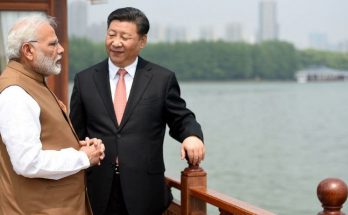China and India are the world’s biggest developing countries and the US is the world’s biggest developed country. The combined GDP and population of these three countries form almost 40% of the global share. And they share the common mission of promoting global peace and development. The peaceful coexistence and win-win cooperation between China, India and the US will not only benefit the 2.8 billion people of our three countries but will also have far-reaching impact on the world’s development.
As President Xi Jinping has said on relations between Beijing and Washington, “the vast Pacific Ocean has ample space to accommodate our two great nations.” And on the relations between Beijing and New Delhi, he has said: “If we speak with one voice, the whole world will listen.” As long as we collectively show enough foresight, courage and open-mindedness, China, India and the US can express similar understanding in three different languages of Chinese, Hindi and English, and can realise the trans-Pacific Ocean and trans-Indian Ocean cooperation in the 21st century, thus bringing the people of our three countries and even the entire world even greater prosperity. We can become the “ballast stone,” ensuring the peace and stability of the world, and the boosters of global economic growth.
Read More







